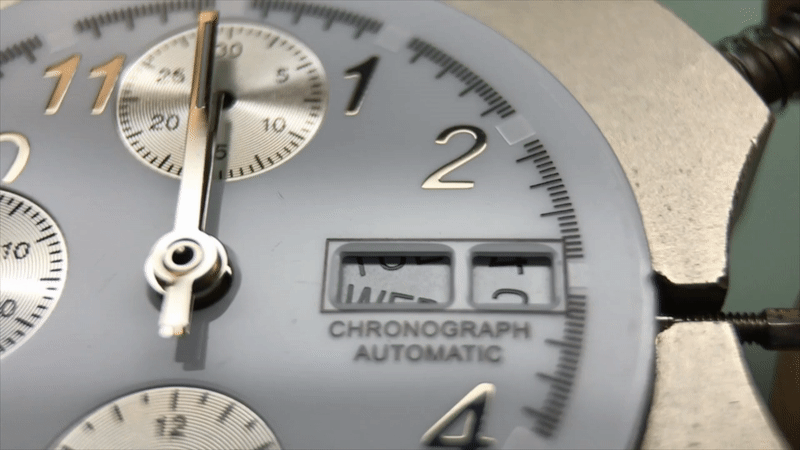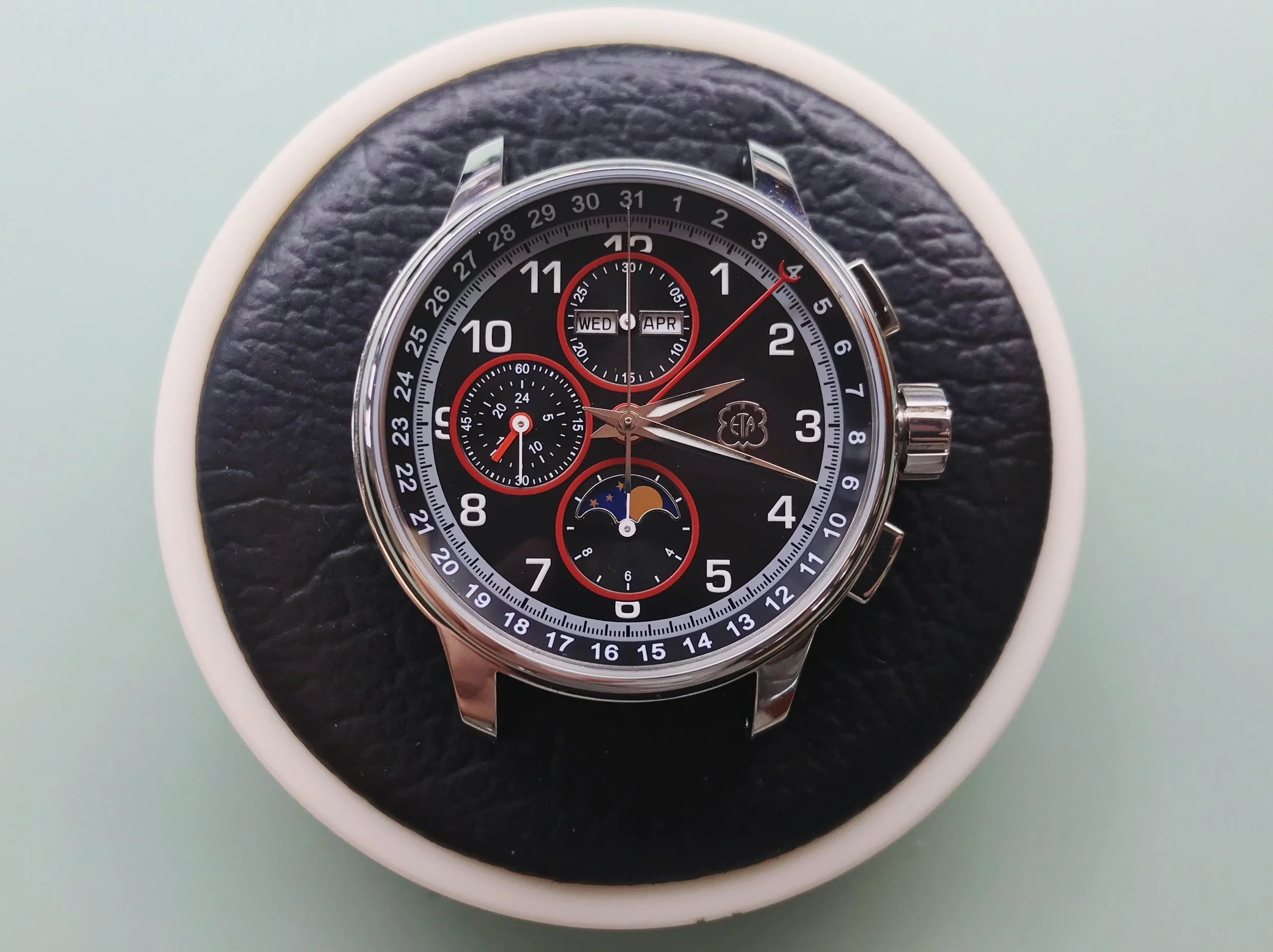7750: Calendar Synchronization

Most of the ETA 7750's tricky bits are in the chronograph, but it also adds a layer of complication in the calendar module with a day in addition to the date.
The 7750 has a "semi-instantaneous" calendar, which means that the day and date discs will slowly creep around until they quickly snap into position. The day/date change starts earlier than you might expect—this is the beginning of the discs' movement, and it's still more than an hour until midnight.
Some watch companies (like Rolex) use truly instantaneous date jumps to avoid having the discs appear twisted in the windows like this, but they're more complicated and costly mechanisms.
The day and date should ideally jump together, but it isn't always possible to get them to sync up perfectly.
At the very least, the date should jump at midnight, with the day following close behind.
The discs are driven by a pair of fingered wheels that are geared off of the hour wheel. The sync is set by aligning the day wheel (top) with a witness line on the mainplate, and aligning the date wheel (bottom) to the tip of the day wheel finger.
Because the second alignment relies on the first, the day wheel finger must be perfectly aligned with the witness line first. Otherwise, the sync will be off. If the day is jumping before the date (bad), the date wheel can simply be advanced by a tooth or two clockwise from pointing at the day wheel finger's tooth to advance the jump.
It's a slightly imprecise setup, and it can be a pain to assemble the whole calendar platform only to realize that the sync is off. Luckily, the calendar discs and their jumpers are modular, so the whole thing can be (carefully) lifted off as a complete unit, and the wheels re-synced.
Watchmaking student at the Lititz Watch Technicum, formerly a radio and TV newswriter in Chicago.












